Are you ready for the soft and smooth Thomas Keller Pasta Dough recipe? I have shared the most authentic and perfect recipe to make your pasta dough perfect.

Chef Thomas Keller is renowned for his culinary skills and high standards. His pasta dough recipe is one of his well-known recipes. You will be amazed at the results once you try making the dough with his tips.
Now, without further ado, read the entire article for more insights. We have shared all the details in the article below. Happy reading!
What's In The Post
Is This The Exact Thomas Keller Pasta Dough Recipe?
Yes, this is the Thomas Keller Pasta Dough recipe prepared by our chef. To ensure your pasta dough mirrors perfection, it is essential to follow the exact process, as demonstrated by chef Thomas Keller.
Moreover, Thomas Keller has used some additives and preservatives to make this pasta dough, but our recipe doesn’t add any.

How Is Thomas Keller Pasta Dough Different From Regular Pasta Dough?
Thomas Keller Pasta Dough is slightly different from regular pasta dough, and it’s all because of the ingredients.
Thomas Keller uses more straightforward ingredients than those used in regular recipes.
Regular pasta dough is made with all-purpose Flour, olive oil, salt, and pasta water. The only difference is Thomas Keller doesn’t add pasta water and salt; instead, he adds eggs to his recipe.
Why You’ll Love This Pasta Dough Recipe?
You’ll use this Thomas Keller Pasta Dough recipe for many reasons. Let me know these reasons:
- Soft And Smooth – Thomas Keller Pasta Dough is incredibly smooth and soft. It has many eggs and yolks, making the dough highly silky, smooth, and elastic. Enjoy your soft and smooth pasta dough.
- Elastic – Thomas Keller Pasta Dough reaches a point where it’s so elastic that you can stretch it a lot. Its smooth and soft texture makes it flexible.
Is This Recipe Vegan And Gluten Free?
Sadly, this Thomas Keller Pasta Dough recipe is neither vegan nor gluten-friendly as some ingredients contain gluten, and some are animal extracted like eggs.
However, there’s a perfect solution to make this recipe vegan and gluten-free.
Replace all-purpose Flour with oat flour and replace eggs with aquafaba. Hence, vegan and gluten-friendly recipes are ready.
Equipment Required For Thomas Keller Pasta Dough
Bowl – Combine all the ingredients and knead them properly until they reach the required consistency.

Thomas Keller Pasta Dough Ingredients
- All-Purpose Flour – Prepare the pasta dough using all-purpose Flour.
- Milk – Add milk to the pasta dough mix to moisten the dough.
- Egg Yolks – Put egg yolks in the dough mix for a better consistency.
- Olive Oil – To retain the moisture in the dough.
- Add one large egg. To add richness to the dough, mix.
Thomas Keller Pasta Dough Ingredients Substitutes
- Almond Flour – I prefer using almond Flour rather than all-purpose Flour. This is the best and healthiest replacement for this all-purpose Flour.
- Soy Milk – Instead of regular milk, use soy milk as it is a better option for healthy substitutes.
- Yogurt – You can replace yogurt with eggs if you don’t like eggs. It is the closest replacement for eggs.
- Vegetable Oil – You can replace olive oil with vegetable oil if you don’t have olive oil.
What Is The Perfect Ratio For Eggs To Flour For Pasta?
Add one large egg and 100 grams of all-purpose Flour for a single serving.
However, the quantity can be adjusted as per the servings. Let’s say you want to make two servings; then, you’ll need two large eggs and 200 grams of Flour.
Thomas Keller Pasta Dough Preparation And Cooking Time
| Preparation Time | Resting Time | Cooking Time | Total Time |
|---|---|---|---|
| 20 Minutes | 8 Hours | – | 8 Hours 20 Minutes |
Thomas Keller Pasta Dough Steps
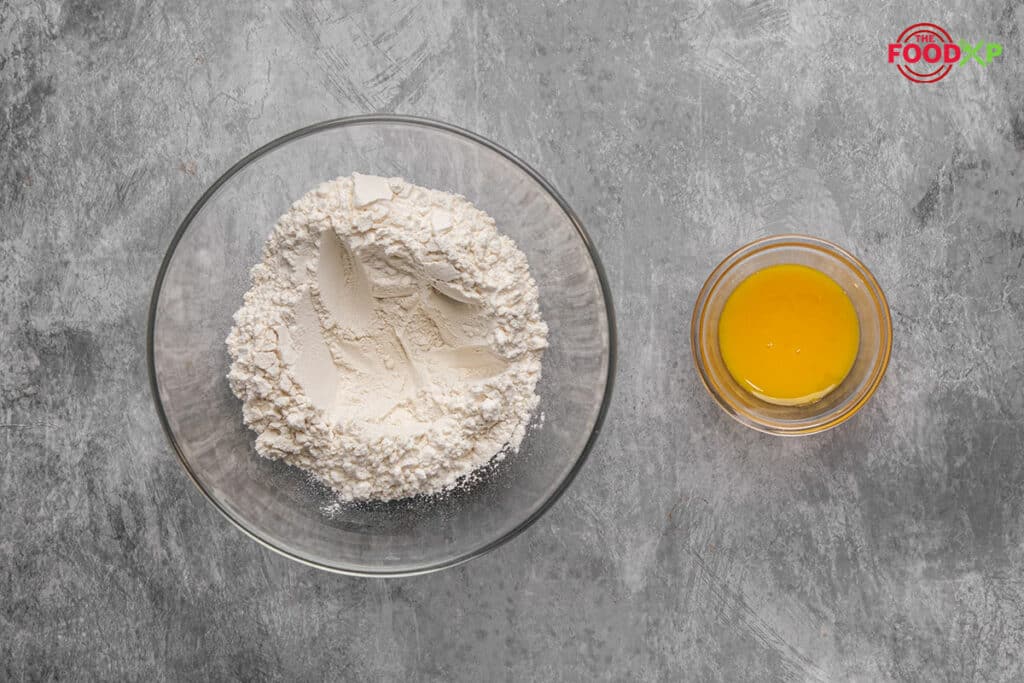
Step 1- Take a bowl and add all-purpose Flour along with egg yolk in that bowl.
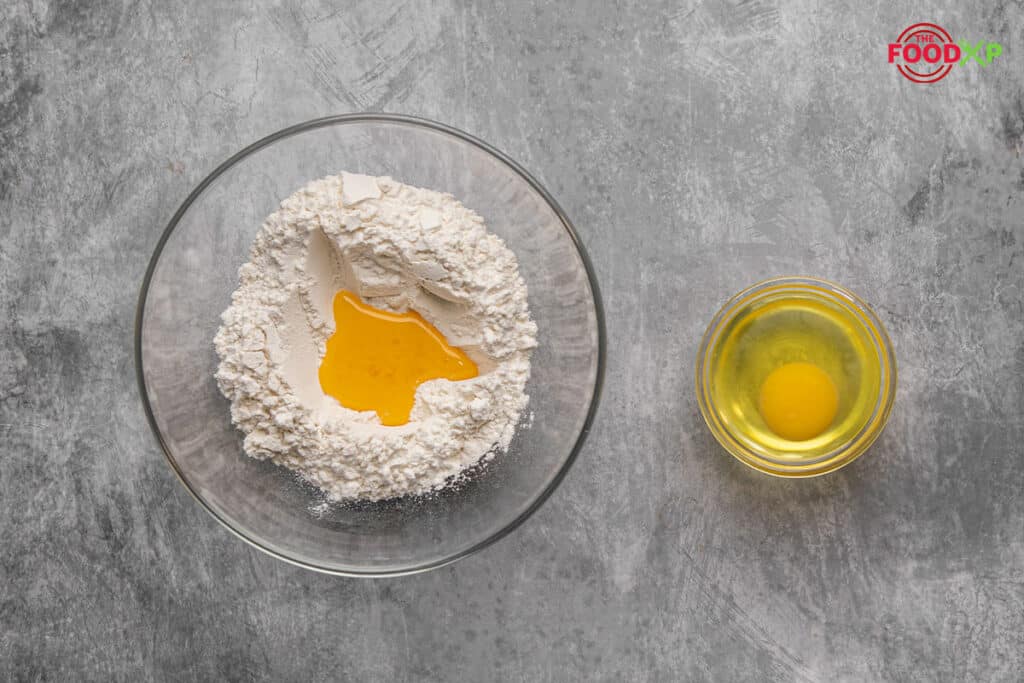
Step 2- Now, take one egg and keep it aside.
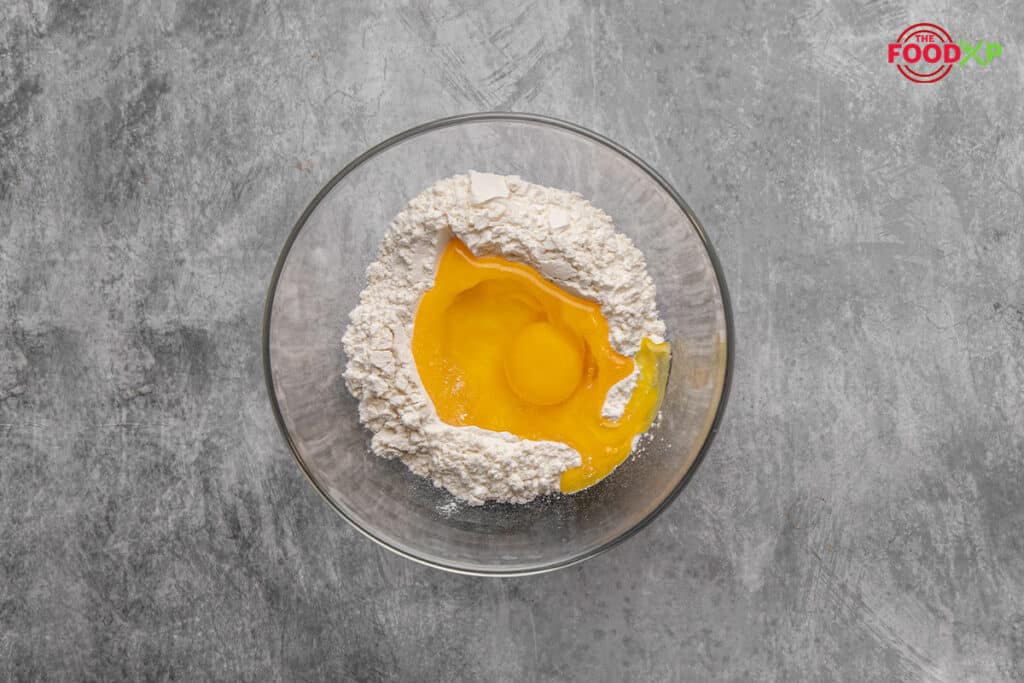
Step 3- Add the egg in the same bowl.
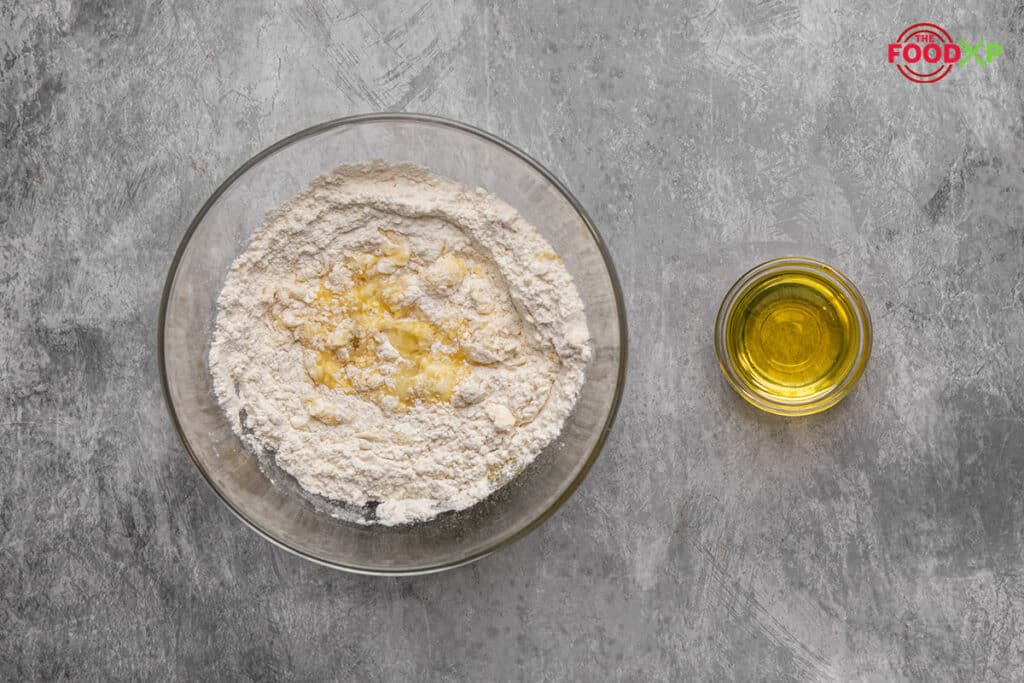
Step 4- Pour olive oil into the bowl.
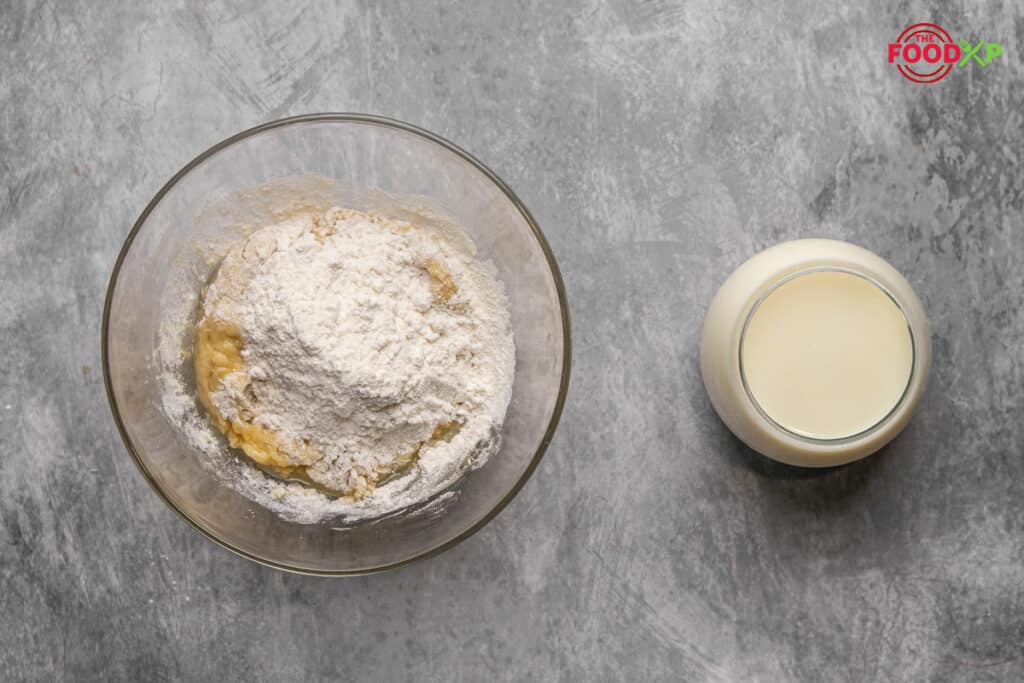
Step 5- Now add milk to the bowl.
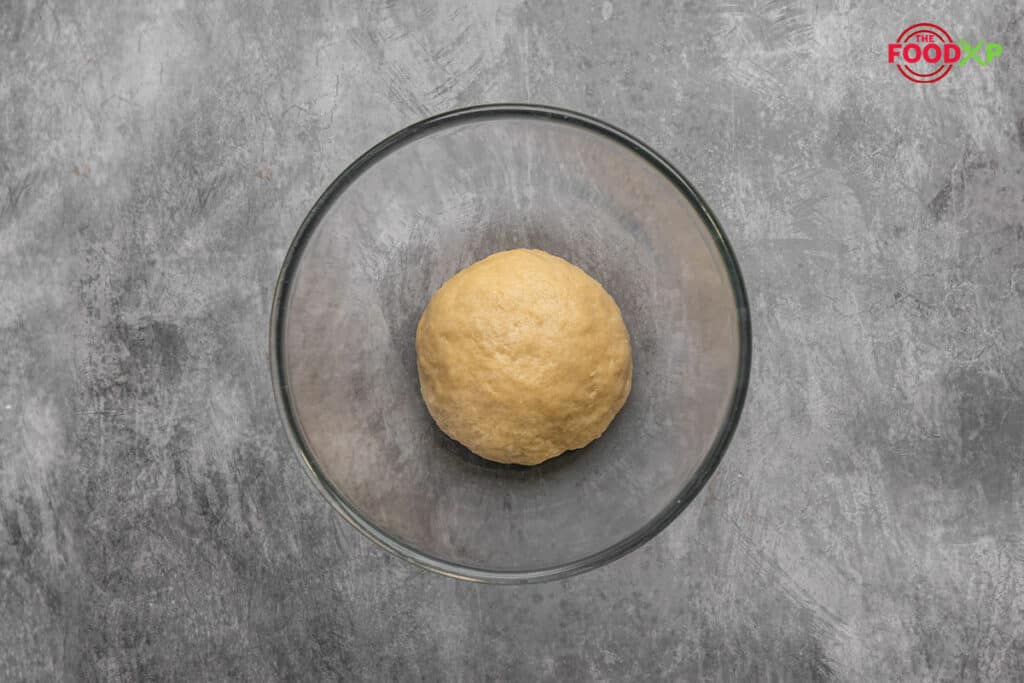
Step 6- Now that all the ingredients are added, it’s time to knead them properly.
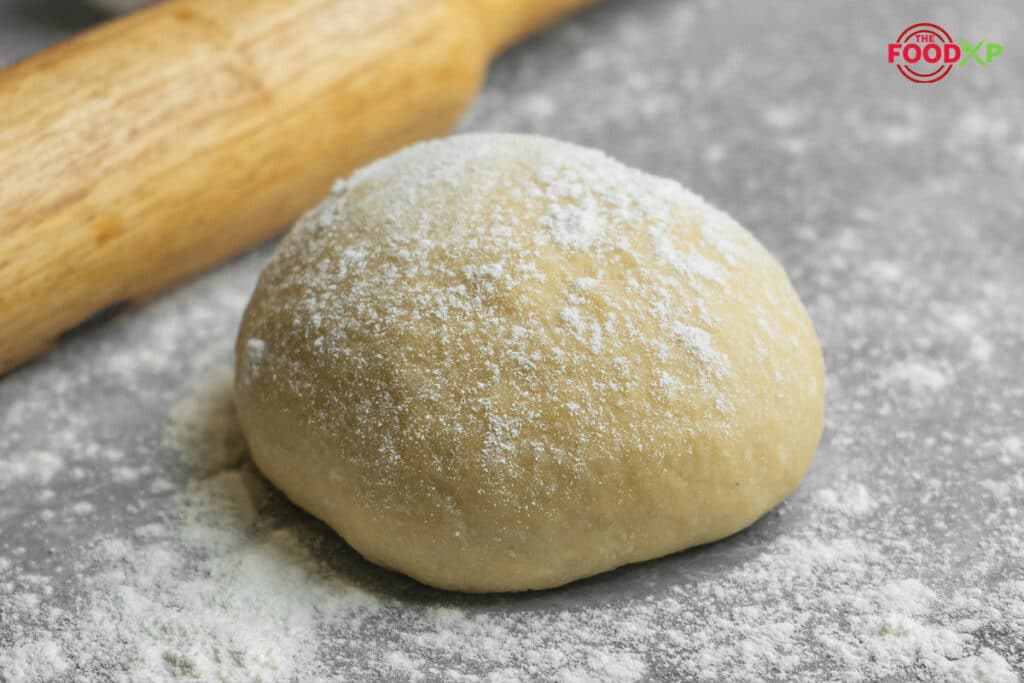
Step 7- Your soft and smooth dough is ready!
Tips To Make This Pasta Dough Recipe Better?
Let’s know how to make a better version of this pasta dough. With the mentioned tips and tricks below, you can achieve better textures.
- Use the Right Flour – Suitable Flour is essential for making this pasta dough. All-purpose Flour is fine, but if you want your dough to be chewier, use bread flour instead of all-purpose Flour.
- Rest – Allow the dough to rest for at least 40 minutes to achieve perfect and impeccable texture. Sleeping will bring out beautiful textures in the dough.
- Experiment With Different Herbs – Ensure you use herbs other than salt, like black pepper, garlic powder, or chili flakes. It’ll give a mild flavor to the dough.
How Will This Pasta Dough Look Like?
Thomas Keller Pasta Dough is so soft and smooth and has an elastic texture. The long kneading process brings out perfect textures and softness in the dough. A perfect dough comes in whitish-yellow. Properly kneaded dough gives the dough an ideal finish.

Why Is Your Pasta Dough Dry And Hard?
Your pasta dough may have a dry and hard result, so avoid the mentioned mistakes.
- Less Liquid Used – The key to a perfect dough texture is an accurate liquid for making this pasta dough. Ensure you use the correct amount of liquid while making this dough; otherwise, it’ll lead to a dry and stiff dough.
- Over Kneading – Over Kneading develops gluten in the dough, leading to dry and complex results. So avoid overdoing it on the dough; knead until it reaches the required texture.
- Not Enough Fat – Eggs give the dough fat and moisture, making it more elastic and smooth. So, use enough eggs and yolk so the dough gets enough moisture to prevent it from getting dry and hard.
Thomas Keller Pasta Dough Nutritional Values
Many people consider homemade pasta healthier than dry pasta because of the eggs. Eggs offer some beneficial nutrients that include iron and carotenoids.
So, it’s a healthy option for you all. Now, for the further detailed nutritional values, check below:
| Calories | 369 |
| Total fat | 2.9 g |
| Cholesterol | 93 mg |
| Sodium | 33 mg |
| Potassium | 229 mg |
| Total carbohydrates | 70 g |
| Protein | 14 g |
Can You Make This Pasta Dough Recipe Ahead Of Time?
Yes, you can make this Thomas Keller Pasta Dough ahead of time, as the gluten in the dough will get enough time to relax.
Resting will bring out the best textures in the dough. But ensure it is correctly stored in a plastic storage bag or an airtight container.
How Can You Store This Recipe?
You can store this pasta dough in a few ways. Let’s find out how:
- Refrigerate – Yes, you can refrigerate this Thomas Keller Pasta Dough for up to three two to three days. Ensure that the dough is transferred to an airtight container so it doesn’t lose its freshness.
- Freeze – Cover the pasta dough with plastic wrap and then transfer it to an airtight container or a freezer-safe bag. It’ll be safe to store for up to a month. However, you have to thaw it overnight before using it.
Thomas Keller Pasta Dough Printable Version
Thomas Kellar Pasta Dough Recipe
Equipment
- Bowl
Ingredients
- All-Purpose Flour
- 30 Grams Milk
- 250 Egg Yolks
- 25 Grams Olive Oil
- 1 Large Eggs
Instructions
- Take a bowl and add all-purpose Flour along with egg yolk in that bowl.
- Now, take one egg and keep it aside.
- Add the egg in the same bowl.
- Pour olive oil into the bowl.
- Now add milk to the bowl.
- Now that all the ingredients are added, it’s time to knead them properly.
- Your soft and smooth dough is ready!
Video
Nutrition
Frequently Asked Questions (FAQs)
What Kind Of Dough Do You Use For Pasta?
One of the common flour to use for making pasta is all-purpose flour.
Does Pasta Dough Need Eggs?
Yes! Eggs will add moisture and softness to the dough. Moreover, it will improve the crispiness of the dough.
How Long Should You Let Pasta Dough Rest?
Rest the pasta dough for at least 30 minutes.
How Long Should You Knead Pasta Dough?
Knead the dough for at least 10 minutes to get a smooth texture.
How Do You Know When Pasta Is Kneaded Enough?
Once you pull the dough apart, you will see that it stretches without tearing as much. It should also appear smoother, sleeker, and more homogeneous.
Conclusion
That’s it! As we reach the end of this delectable Thomas Keller Pasta Dough recipe. Now it’s your turn to make this homemade Thomas Keller Pasta Dough. Remember to come back and share your experience.
For more chef delight recipes, click on Thomas Keller Turkey Gravy, Thomas Keller Salmon Recipe, Thomas Keller Roast Chicken, and Thomas Keller Ratatouille.









PERFECT THANKS